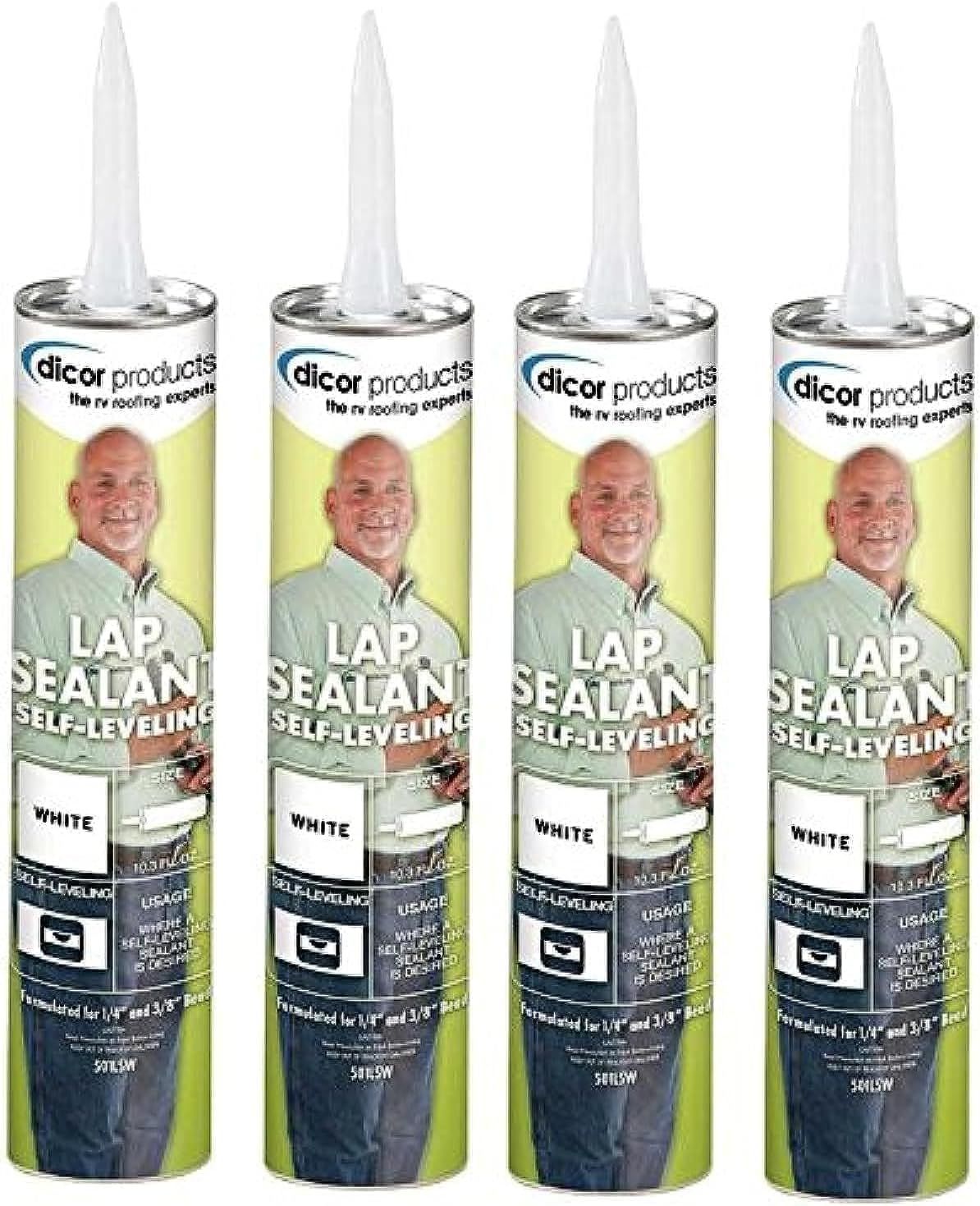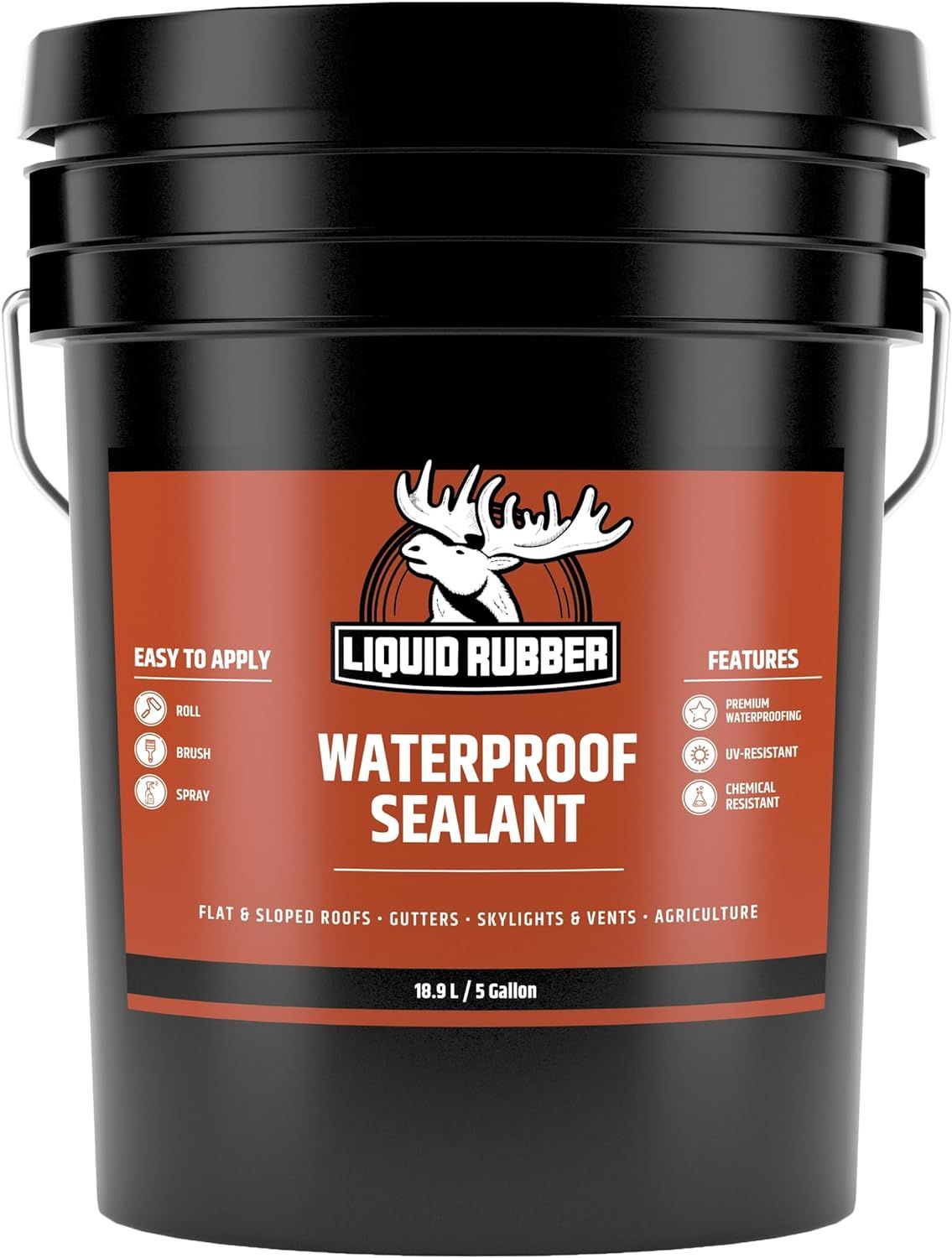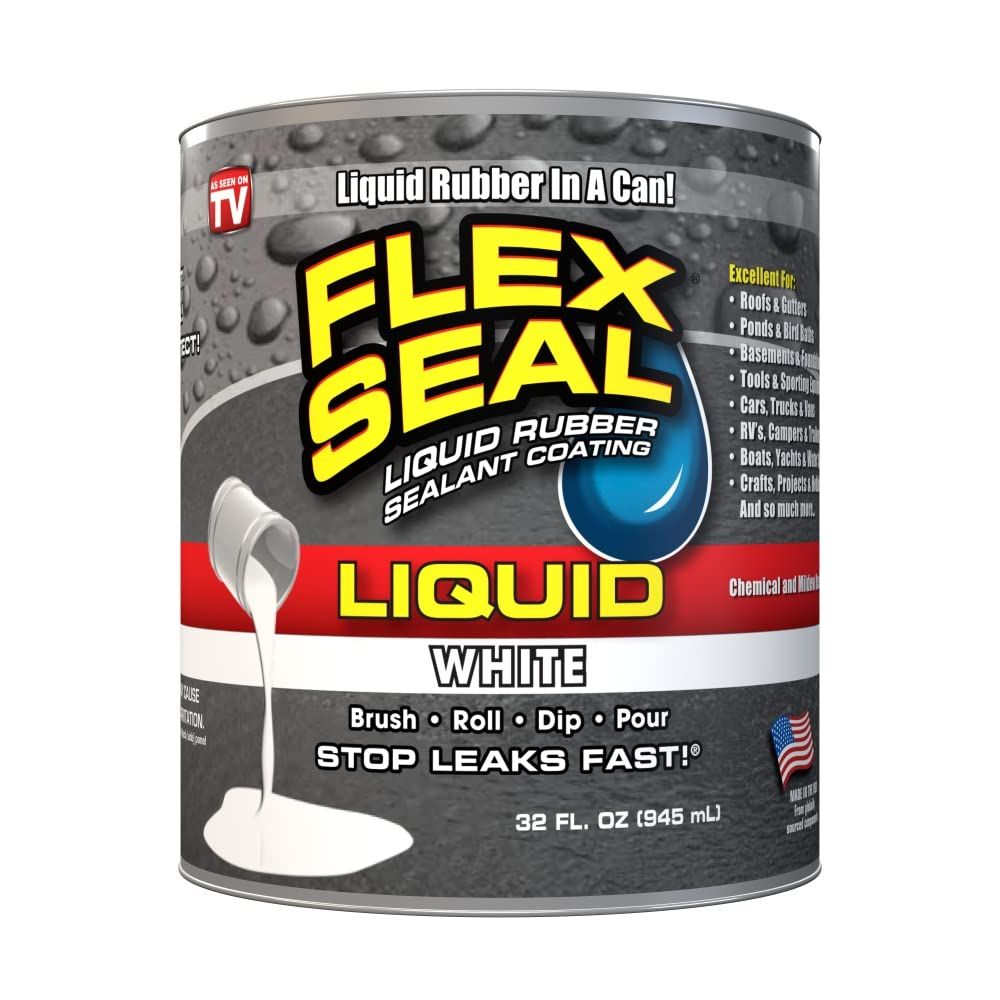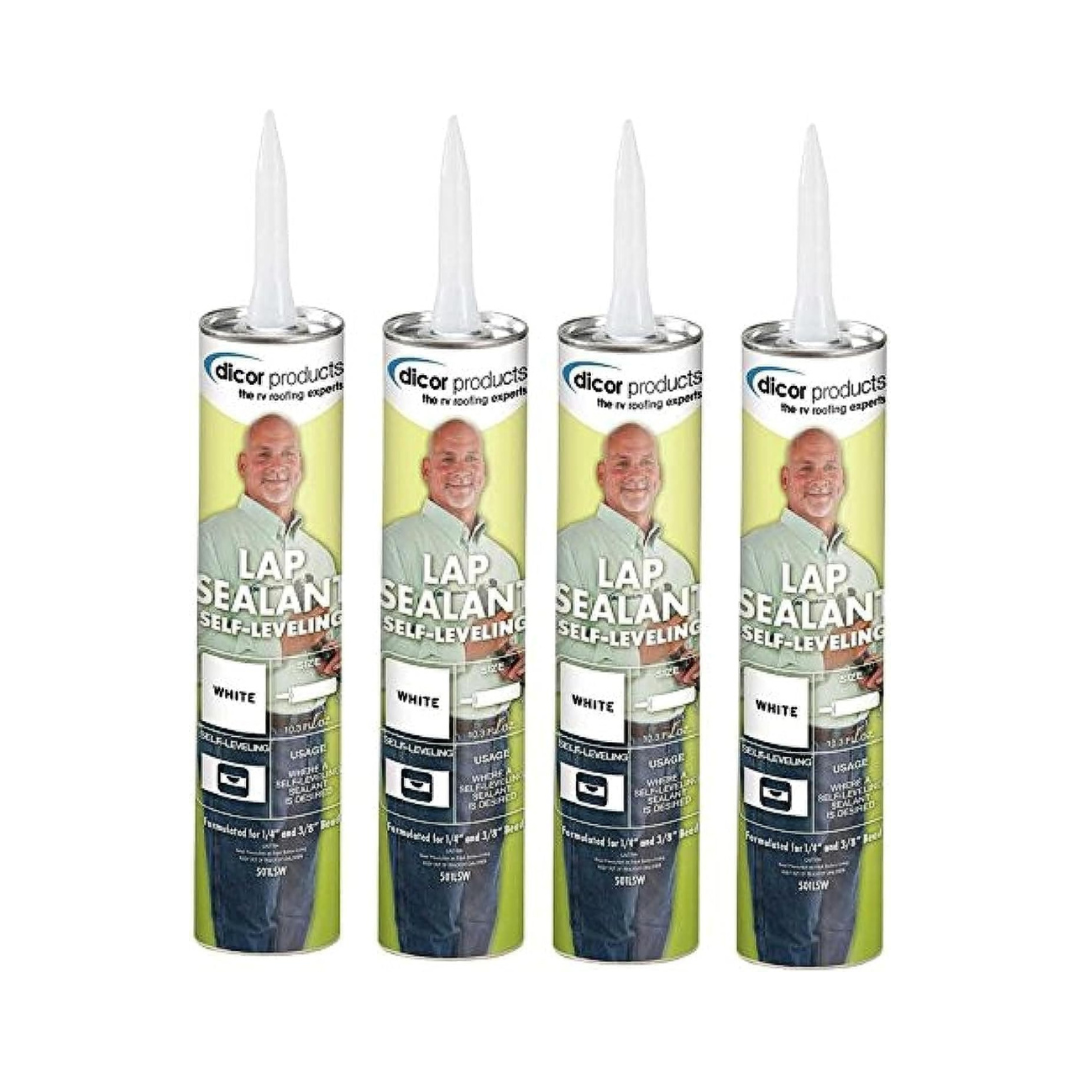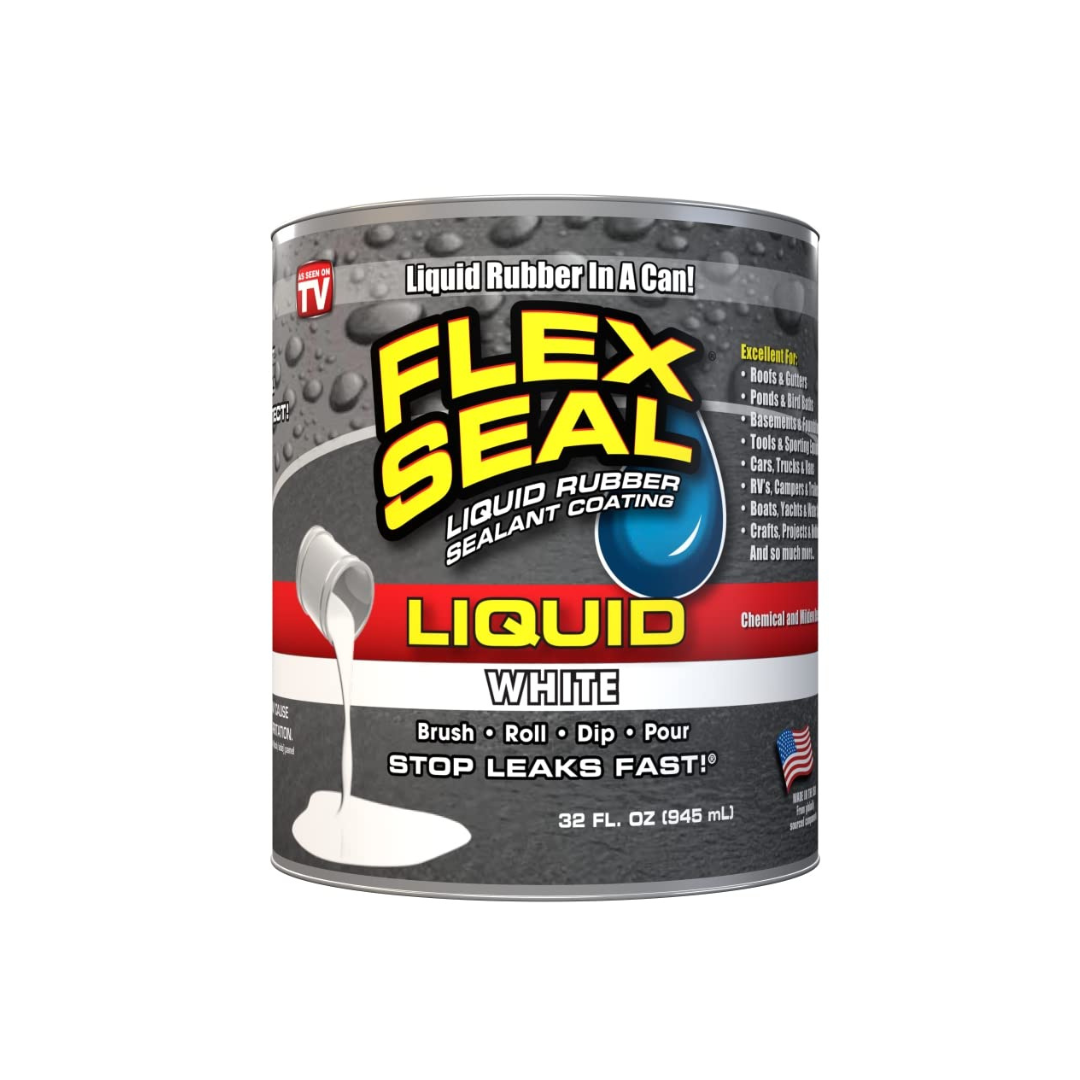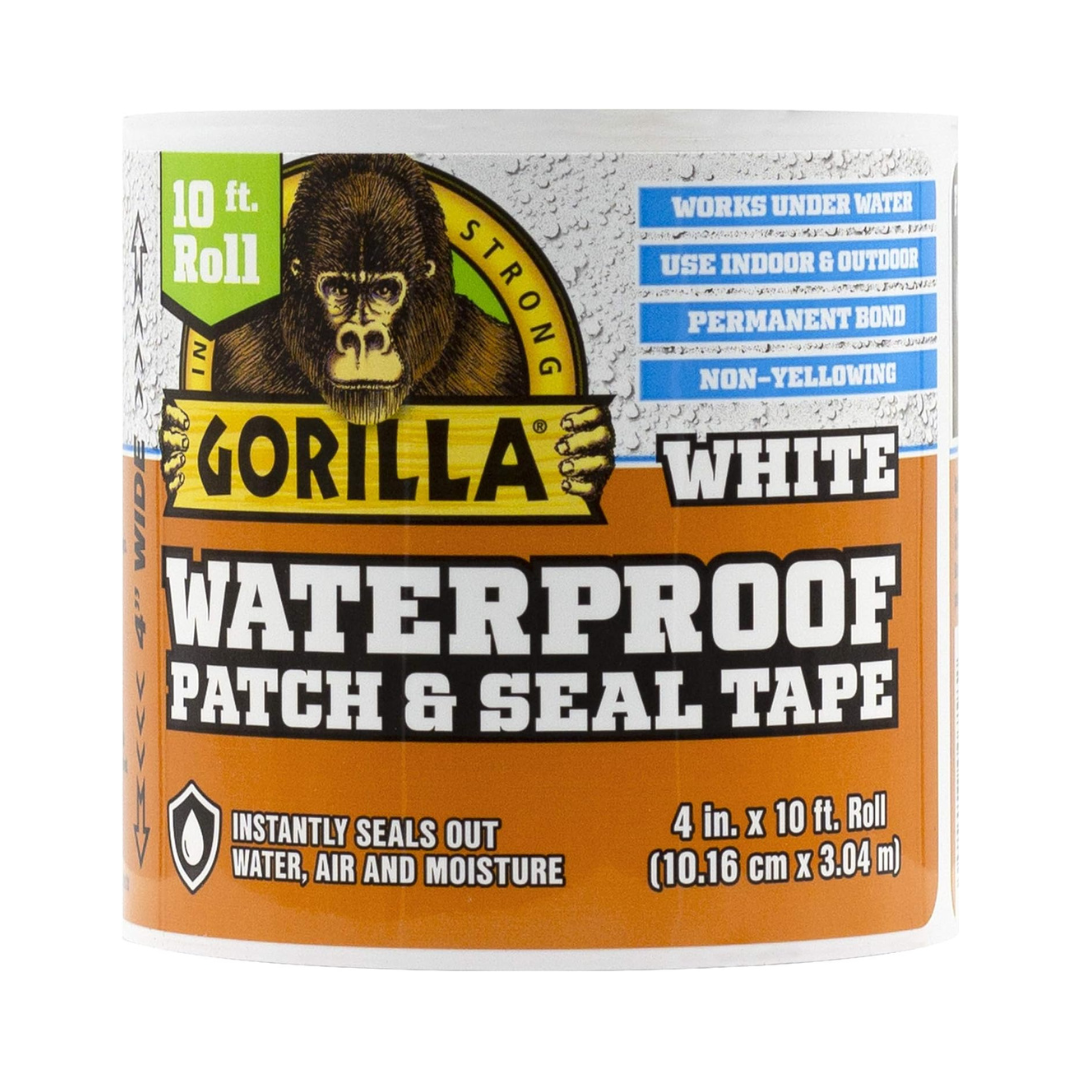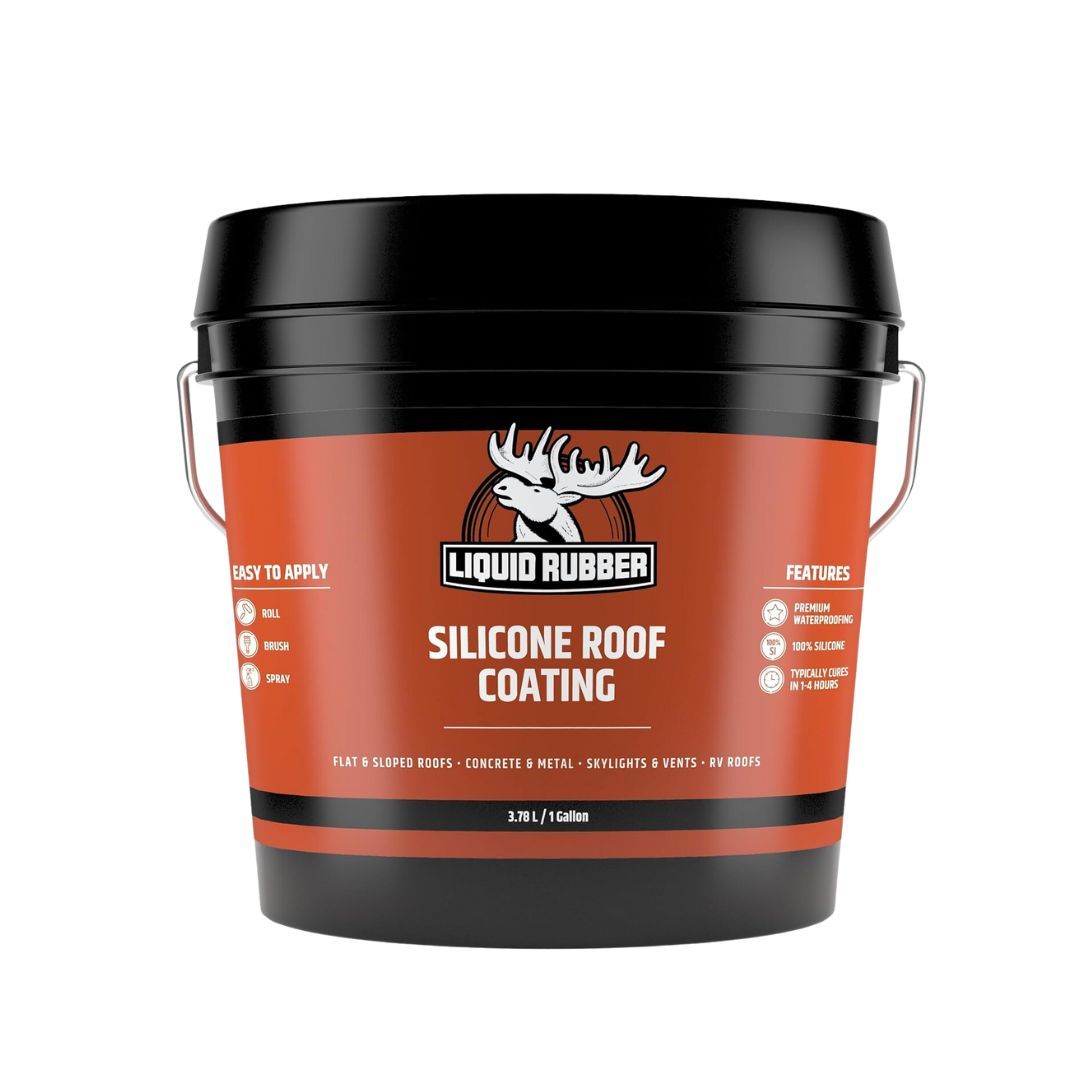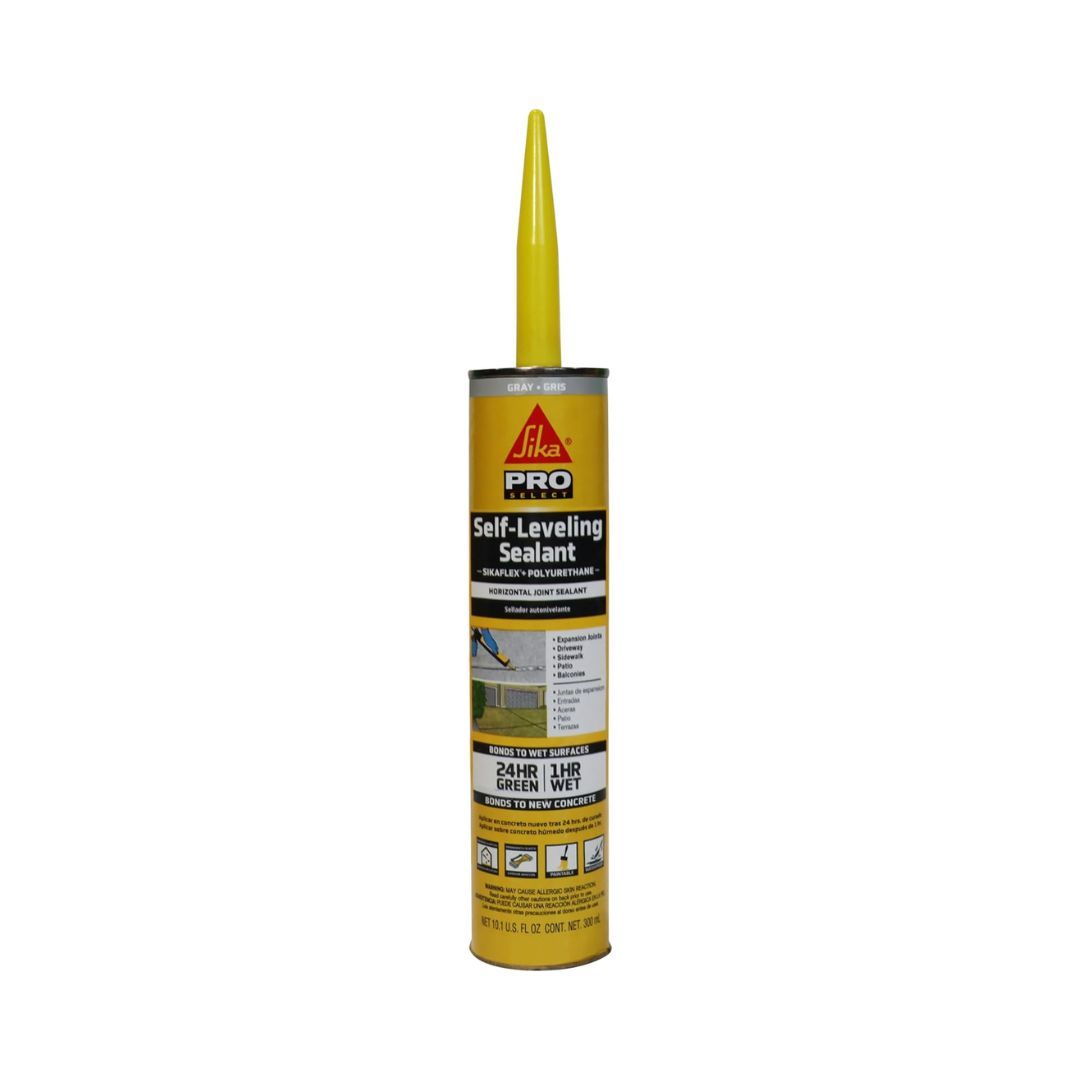We may be compensated if you purchase through links on our website. Our team is committed to delivering honest, objective, and independent reviews on home products and services.
Roof sealants not only cover roof leaks, they prolong the life of your roof by shielding it from water, ice, and UV rays.
These sealants come in many forms, including liquid in a paint can, liquid in a spray can, liquid in a caulk gun, and adhesive tape. They’re also made of a variety of materials, including silicone, rubber, and polyurethane.
Choosing the best roof leak sealant to help you patch up a roof leak can depend on several factors, such as the size of the seal and the type of your roof. You can expect to spend between $20 to $50 on most individual sealant packs. However, sealants sold in larger quantities for whole-roof sealing can cost upwards of $150 to $200.
After researching more than 20 of the highest-rated roof sealants and reading hundreds of customer reviews, our pick for the best sealant for small roof leaks is Dicor’s Self-Leveling Lap Sealant, which comes in an easy-to-apply tubes, while our pick for larger leaks is Liquid Rubber’s Waterproof Sealant.
Read our guide below for more of our top picks.
Top 7 Roof Sealants
*Links open to product retail page.
- Best Overall: Dicor Self-Leveling Lap Sealant
- Best for Large Leaks: Liquid Rubber Waterproof Sealant
- Best for Minor Leaks: Flex Seal Liquid Rubber in a Can
- Best Sealing Tape: Gorilla Waterproof Patch & Seal Tape
- Easiest Application: Flex Seal Spray Rubber Sealant Coating
- Best Silicone Sealant: Liquid Rubber Silicone Roof Coating
- Best Polyurethane Sealant: Sikaflex Self-Leveling Sealant
Compare Top Sealants for Roof Leaks
| Product | Application Type | Quantity | Compatible Materials | Color | |
|---|---|---|---|---|---|
| Dicor Self-Leveling Lap Sealant | Caulk | Four 10.3-oz. tubes | Vinyl, wood, aluminum, concrete, metal | White | |
| Liquid Rubber Waterproof Sealant | Polymer sealant | One 5-gallon tub | Wood, concrete, metal | Black | |
| Flex Seal Liquid Rubber in a Can | Liquid rubber | One 32-oz. can | Concrete, glass, brick, wood, ceramic, metal | White | |
| Gorilla Waterproof Patch & Seal Tape | Adhesive tape | One 4-inch-by-10-foot roll | Aluminum, wood, vinyl, acrylic, glass, plastic, metal, rubber, steel | White | |
| Flex Seal Spray Rubber Sealant Coating | Liquid rubber | Two 14-oz. cans | Concrete, glass, brick, wood, ceramic, metal | White | |
| Liquid Rubber Silicone Roof Coating | Silicone sealant | One 1-gallon tub | Metal, Wood, Concrete, EPDM, PVC | White | |
| Sikaflex Self-Leveling Sealant | Polyurethane sealant | One 10-oz. tube | Concrete | Gray | |
| Product | Application Type | Quantity | Compatible Materials | Color |
Best Overall
Good For: Homeowners who need to fill a small gap quickly on roofs or other areas of their home.
What Are People Saying About the Dicor Self-Leveling Lap Sealant?
We found that customers who gave this sealant a positive review liked that it was long-lasting and had an easy application. Several others complimented its self-leveling ability. However, we found that some felt this product had cheap packaging, and others said it bubbled up instead of sealing flat on their roof.
“Use to seal cracks and screw heads on RV roofs. Have used for 20 years, quality product. Shipped quickly, liked the price. I usually order 12 at a time. Never been disappointed in the results.” — Roger W. Stone via Amazon
“Was such a good price for a popular product but after using four tubes, it made our TPO roof bubble up whereever it was put. That was put on over a week ago, and it has not been laid down all the way yet hoped it will when it gets warmer.” — Sarah Boneham via Amazon
Best for Large Leaks
Good For: Homeowners who need a large amount of sealer for large leaks or whole-roof projects.
What Are People Saying About the Liquid Rubber Waterproof Sealant?
We noted that many reviewers who liked this product commented on its ability to dry quickly and how easy it was to apply to rooftops. Others said that it was particularly good at getting through tight cracks. However, some others said that it didn’t work well on wood, and others said it leaked easily.
“This is sort of a liquid rubber as you apply it out of the bucket. Consider it thicker than paint, but still ‘paintable’ in application. I really like it because it will ooze into all the cracks and nooks and crannies that you want to be filled without making you aggravated doing it. Then it settles and flattens out really nicely. Once completed, your roof will be sealed.” — NE Major Dude via Amazon
“I used it to coat the interior of a galvanized stock tank to create a giant tank/pond. After 4-5 coats and about a week of curing in dry weather, the coat did not stick to the steel very well. It required a lot of touch up and resealing the peeled out area. When I fill the water tank with water, the color of the paint turned brown, which doesn’t look very appealing in a tank/pond. All in all, after 2 weeks of messing around with it, it held water without leaks. […] Overall the product was easy to use but as it was advertised as being used in ponds, I thought I can apply it to my application but had regrets afterwards. — Sang Vo via Amazon
Best for Minor Leaks
Good For: Those looking for a non-toxic easy-to-apply sealer for small or minor roof leak repairs.
What Are People Saying About the Flex Seal Liquid Rubber in a Can?
We found customers who left positive reviews for this product liked its thick coating and long-lasting, water-tight seal. Others liked that it was easy to apply. However, numerous customers said this sealer was messy and leaked easily.
“I used it to reseal the joints and seams of an aluminum-vinyl type roof on a sunroom that is 15 years old. It looks professional and is watertight; any roofing company would have charged a lot for this project…. There are not too many products that live up to what they say they do, but this product does! It works great, and the flex glue also is a winner.” — Amazon Customer via Amazon
“It works very well as a sealant, but it’s very messy, hard to clean off the brushes and will get messed up if air hits it in the can. You have to use mineral spirits to clean it up or off.” — Ms. SDS via Amazon
Best Sealing Tape
Good For: Customers looking for a quick-fix sealer to patch up areas and keep them protected from water damage.
What are people saying about the Gorilla Waterproof Patch & Seal Tape?
For this product, we found that many of the positive reviews centered around the strong adhesive and user-friendly design. Others were impressed by its ability to stick on wet surfaces. On the other hand, several customers felt this tape didn’t hold up to heavy precipitation, and others said it was difficult to use.
“Sticks to nearly anything wet or dry. Even underwater. I use it to repair spots on my RV’s roof. Have had some on there for nearly a year now with no signs of coming off. One thing about this tape is that you need to make sure you place it exactly where you want it because it isn’t coming off without one hell of a fight. Extremely pleased with this tape.” — Bocephus193 via Amazon
“I have used this tape for two years now on my vinyl pool. I was able to patch leaks last year from the outside with no issues. This year had a couple more leaks so decided to try and patch inside while water in pool. I cleaned the surface but the tape did not adhere to anything that was wet. I drained water low enough then tried again and patch adheres great. So in all does work just not like they state with the underwater statement.” — donald via Amazon
Easiest Application
Good For: Homeowners who prefer a spray sealer that can handle small or medium-sized roof repairs.
What Are People Saying About the Flex Seal Spray Rubber Sealant Coating?
Several customers we found were pleased with this sealer’s strong seal, noting it held up to wind and rain. Others liked how simple it was to apply and how versatile it was to use on various parts of the home. However, some said it did not stay in place, and others said it had a strong smell that took several days to go away.
“I live in high plains with tons of high wind. Some of my shingles started getting loose and flapping. Before it turned into a full-blown leak, I decided to buy these cans and some shingles to replace the crap ones…. The Flex-Seal actually stuck the new shingle to the roof a bit, making it so the wind has less of a chance of blowing it up now. It’s been about a month since I replaced the shingles, and so far, so good. I bought the two-can pack but didn’t need the second one since the one can has a lot of coverage.” — MJ Castle via Amazon
“I used this both to seal a retaining wall over a newly repaired (by a contractor) foundation and to fix a leak in my large, free-standing waterfall. So far, no problems! Make sure you ventilate!! Very strong chemical smell, which dissipates within a few hours. You simply cannot stay in the same room as the spray for several hours, even with windows open.” — Debra50 via Amazon
Best Silicone Sealant
Good for: Homeowners looking for a reliable silicone sealant that works for flat, sloped, and metal roofs.
What Are People Saying About the Liquid Rubber Silicone Roof Coating?
We found that most customers who gave this roof coating a positive review were impressed with its water-resistance, easy application, and how well it blended in with the coating on their roofs. However, some users complained that this sealant was messy to use, and some found the application challenging.
“This gallon-sized container of silicone roof coating is the perfect size for post-winter touch-ups around and vents, corners, or other places of concern to keep everything watertight. I was able to do multiple coats in many spots, and everything seems to work as it should… It seems to be a really nice quality, and the white blended well with the previous white coating. You can’t tell there are touch-ups.” — Rev. Dr. Who via Amazon
“… I used this to patch up exposed nail heads and put on other areas where there were missing or worn-out shingles. This stuff is sticky and messy but gets the job done! I used an old paintbrush to coat the areas that needed it, and it worked as we expected it to. No leaks in our roof, and we are able to put this project off for a year or two without worrying about water getting inside.” — Trevor & Amber via Amazon
Best Polyurethane Sealant
Good for: Customers looking to seal up small leaks with a flexible, elastic sealer.
What Are People Saying About the Sikaflex Self-Leveling Sealant?
We found that customers who were satisfied with this product were particularly impressed with its easy application process, and how long it lasted. Others were pleasantly surprised by its self-leveling capability. However, some noted the color did not blend in well, and others noted it came out of the tube unexpectedly, creating a mess.
“Had a situation on an open-air aluminum patio roof cover (nearly flat) where it would collect condensation and then slowly drip onto my patio for several hours in the morning. I wasn’t sure if this would work … I gave it a shot and am *very* happy with the results. My ‘leak’ has stopped completely. I’m not sure how long it will last or what replacement will be like (probably have to scrape the old material), but expect it to last for several years.” — cbstevek via Amazon
“Messy! It would not stop coming out of the tube after opening. It made a mess of the front porch, which was hard to clean up. It seemed to do its job okay once I got it in the cracks, but I realized the cracks were deeper than I thought, and I should have poured in a mixture of sand/gravel or something to help with the project.” — Lazy Shopper via Amazon
Types of Roof Sealants
Typically, roof sealants are separated into five categories based on what they’re made of, including:
Acrylic
Acrylic sealants are designed to deflect UV rays, making them popular in the South and West, where roof sun damage is common. They also have a moderate amount of moisture resistance, making them best for sloped roofs because flat roofs tend to create pools of water that acrylic isn’t strong enough to withstand.
Polyurethane
Polyurethane sealant is highly resistant to water but not as resistant to sunlight, making it best for areas that get a lot of rain and snow as opposed to sunshine.
Silicone
Silicon-based sealants offer both water and sunlight protection, making them good for protecting your roof from any weather condition. The main downside to this type of sealant is that it’s expensive, preventing it from being financially feasible for homeowners on a budget to buy enough of it to cover their entire roof.
Rubber
This type of sealant comes as a liquid form of rubber. It’s usually water-based to thin the rubber and make it easier to apply. It protects against both sun and rain.
Tape
While most other options are liquid, this type of sealant comes as strips of moisture-resistant material. It has an adhesive backing that you stick onto the roof to stop leaks or seal seams. It’s an affordable sealant option, but because of its small size, it’s not meant to cover an entire roof.
What To Know Before Buying Roof Sealants
Each roof sealant will vary in terms of water resistance, UV reflectivity, longevity, and application. It’s important to take all of these factors into consideration before choosing the best product for your needs. Read our buyer’s guide below to find our more information on selecting the best roof-leak sealant.
What sealants have the best water resistance?
Every sealant provides some level of water resistance, but rubber, silicone, and polyurethane have a waterproof quality, allowing your covered roof to withstand heavy rain and standing water. However, in order to create a completely waterproof barrier, your sealant will require several layers. Its directions will instruct you on how to do this.
What should you look for to determine a sealant’s UV reflectivity?
A sealant that can reflect sunlight helps to keep your house cool. This is especially useful in the summer months, as it can decrease air conditioning use and result in a lower electricity bill. Rubber, acrylic, and silicone sealants have the highest reflectivity levels. The color of the applied sealant will also play a role in its reflectivity, with lighter colors being better at reflecting than darker colors.
How long lasting is the average roof sealant?
Each sealant has a varying lifespan, but most last 10 to 20 years. Tape sealants last this long with one layer of tape, but the remaining liquid types may require several coats, as a thicker coating lasts longer. Proper application is another factor that affects longevity. If you don’t follow the manufacturer’s instructions, you’ll decrease the sealant’s life. Most manufacturers warn against applying their sealant in cold weather, to a wet or dirty roof, or before a storm when it hasn’t had enough time to cure.
What is the process like for applying roof sealant?
Different sealants have different application methods. The tape type of sealant has a self-explanatory application process, but the remaining types may come in a paint can, spray can, or caulk tube. The paint can method gives you a thick layer of sealant along with the quantity to apply it to a large surface area. Spray cans and caulk guns take less work, but they come in smaller quantities, making them best for small leaks.
How To Identify a Roof Leak
Finding a roof leak that needs treatment is the first step before narrowing down your sealant options and helping you avoid the cost of a new roof. There are several tell-tale signs that can help you identify roof leaks, both from inside your home and from the roof. Read this guide below for some common roof problems.
- Water on the ceiling: The most common sign that you have a leak is a wet spot on the ceiling. If you can access your attic, check the area above the leak and see if there are more leaks or wet insulation.
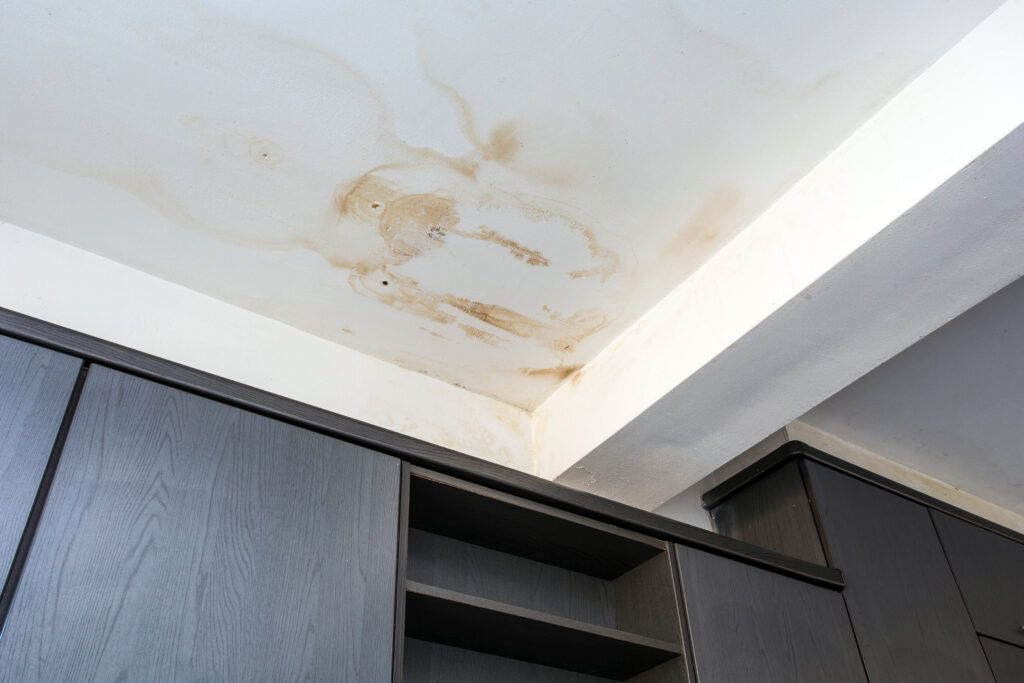
- Musty smell or dripping Sound: If you can’t visibly see a roof leak appearing on your ceiling but still hear a consistent dripping sound or smell musty odors, it may be the cause of a roof leak. This should also prompt a trip to the attic or on the roof to help you find the exact source of the leak.
- Vent boot needs to be replaced: Rubber boots around plumbing vents can sometimes tear or crack, which can cause a leak. If you notice a tear in the boot, try to replace it with a new boot and see if that solves the leaking issue.
- Damaged shingles: If you’re looking at your roof and see damaged shingles, that could be a tell-tale sign of a leak and should warrant further inspection.
- Pooling water: If your roof has pools of water after a rainstorm that don’t evaporate in 48 hours, it could lead to a leak and should be treated immediately.
- Mold or mildew: If you notice mold or mildew seeping into your home, it means water is leaking into your home, and it’s likely coming from the roof. At the first sign of mold, inspect the attic as soon as possible.
Roof Sealant FAQs
What does the ISO certification on my roof sealant mean?
The International Organization for Standardization (ISO) created standards for testing how well a sealant protects a surface from corrosive elements. The scale ranges from C1 to C5, with C1 offering minimal protection and C5 offering maximal protection. It’s up to you to determine how much protection you want your sealant to offer, but if you live in an area with harsh conditions, we recommend looking into a C5 sealant.
Can you remove roof sealant?
Yes. You can remove liquid sealant with a plastic putty knife if you’re looking to DIY. If you’re having trouble peeling your tape sealant off with your hands, you can also use a putty knife. However, be careful not to damage the shingles underneath.
How long does it take for a roof coating to dry?
It depends on the sealant’s formula and the weather at the time of application, but most liquid sealants will take between eight and 24 hours to dry.
What is the difference between solvent-based and water-based roof sealants?
Solvent-based sealants are highly resistant to the elements, but they’re more expensive and take more effort to apply because of their thick consistency and requirement of wearing a respirator. Water-based sealants are less resistant to the elements, degrading faster and requiring more frequent touch-ups. However, they’re more cost-effective and easier to apply.
Our Methodology
This Old House has empowered homeowners and DIYers for more than four decades with top-notch home improvement advice in the form of television programs, print media, and digital content. Our team focuses on creating in-depth product and service review content. To date, we’ve published over 1,600 reviews on products in the home space, including power tools, outdoor equipment, major appliances, kitchen gadgets, electronics, and more that focus on product quality and helpfulness to our readers.
To provide our readers with the best recommendations possible, we rely on several key sources of information to help guide our selection process.
Initial Research: Our research process began by generating a list of products with a significant number of verified buyer reviews and an average customer review rating of 4–5 stars. We looked at positive and negative reviews alike, focusing on information from both satisfied and critical buyers.
Expert Insights: To complement our in-house expertise, our team looked at reviews and videos from trusted publications and independent testers, spoke with subject matter experts, and drew insights from reader contributions.
Final Product Selection: We then began fine-tuning our list by replacing older models with the latest versions and eliminating any discontinued models. From there, we compared each model’s feature set to create a final shortlist, selecting the best-in-class options for various buyers, budgets, and scenarios.
Once we conclude our research, we craft a comprehensive, user-friendly article of recommended products and additional information to help our readers make the right purchase.
Questions or Comments?
To share feedback or ask a question about this article, send a note to our Reviews Team at reviews@thisoldhousereviews.com.
